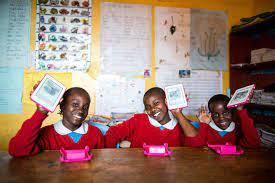While the COVID-19 pandemic has upended many of society’s norms, it has also delivered some unexpected benefits. The way in which social innovators work with communities, governments, funders and each other has undergone a rapid paradigm shift, with results that might not have been achievable in the same timescale at any other period in our history.
This shift has been facilitated by Catalyst 2030, a global movement of social entrepreneurs and social innovators from all sectors who share the common goal of creating innovative, collaborative, and action-orientated approaches to accelerate the achievement of the Sustainable Development Goals (SDGs) by 2030. This movement of more than 600 member institutions and 900 individuals covering all 17 SDGs and working in more than 190 countries launched at the World Economic Forum Annual Meeting in Davos 2020.
Have you read?
Social entrepreneurs work together
The collective strength of a network allows for a rapid move from concept to scale, as the social enterprise TrueFootprint discovered. It had developed a tech solution that empowers local communities to produce, interpret and own verifiable data about the issues that affect them the most. When COVID-19 hit, CEO Fredrik Gautung and his colleagues recognized that local people were best placed to confirm what personal protective equipment was needed, and whether it reached its destination.
“The easiest way to check if there is a doctor in a particular area is to empower local people to provide that information. We had built the solution and were implementing it in sustainability projects, but when COVID hit we needed to roll it out to scale,” Fredrik Gautung says.
“We started doing this with partners from Catalyst 2030, and within eight weeks we had partners in 50 countries. I’ve never done anything that moved as quickly as this – we were able to put our app directly into the hands of healthcare workers and patients. We took the risk, but the risk was shared and the results were life-changing,” he says.
Social entrepreneurs work with governments
Governments are also changing the way they work with social innovators. Many governments have similar aims to achieve the SDGs, and have realised that partnerships are essential for innovative solutions in the social sector to have sustainable impact at scale. Governments in developing countries are increasingly realizing that they must accelerate these partnerships to meet the SDGs.
Some, like the government of Paraguay with its national innovation strategy, are being recognized internationally for their collaborations with Schwab Foundation social entrepreneurs like Yves Moury of Fundación Capital (FC). FC’s approach of working in partnership and in scale with governments meant that when the pandemic hit it was ready to assist. It created a comprehensive campaign through WhatsApp to ensure the most isolated families could be reached with information and digital support. An app in Spanish and the local language Guarani was built to tackle the escalation of gender-based violence during the pandemic. Data is securely stored in FC’s servers and aggregated data is shared with the government. Even Paraguayan President Mario Abdo Benítez is taking a personal interest.
Another world-leading example can be found in Malawi where, for more than a decade, the Ministry of Health has partnered with social innovators at VillageReach. Together, they developed Chipatala cha pa Foni (Chichewa for Health Center by Phone, aka CCPF), a community-based health hotline. With too few health workers to support community needs, digital solutions were essential. CCPF provides health and nutrition information to all Malawians, more than half of whom own a mobile phone. It is now integrated into the Ministry of Health’s national health strategy and budget. The Ministry of Health also negotiated with zero-rate calls with mobile service providers, hired nurse hotline operators and supervisors from VillageReach into the government, and facilitated a celebration in December to mark a successful transition of the hotline. Now VillageReach is supporting the government to add features like AI and pre-recorded messages to manage increased volume due to COVID-19. The Ministry of Health noted: “CCPF shines a light on how effective partnership with government, donors and others is the best way to sustain impact of health solutions at scale.”
Social entrepreneurs work with philanthropists and funders
The impact of collaborations with social entrepreneurs is also changing philanthropy by breaking down the silos that traditionally funnel funds into sectors which are interconnected – such as education, health or nutrition – thereby diluting the impact.
Catalyst 2030 is predicated on the objectives of not only accelerating the progress to achieving the 2030 SDG goals, but also to changing the hearts and minds of funders to a more holistic, integrated and systemic mindset and application of funding strategy.
As Tim Hanstad, a former social entrepreneur and now CEO of the philanthropic Chandler Foundation, explains: “You can’t effectively educate a systemically malnourished child, and by tapping into networks such as Catalyst 2030, philanthropic organisations can more effectively evaluate need and apply their respective funding strategies to the problem as a whole. This way of working is not without its challenges, but we are seeing this is increasingly accepted as the way to go in the future.”
As social entrepreneurs and innovators, we are fuelled by a sense of urgency and a passion to make a measurable difference. We only have nine years to achieve the SDGs. The impact and human cost of not achieving these goals is both immeasurable and unacceptable. The inspirational collaborations that have mushroomed over the past 15 months are giving us surety.
Nine years is not long. Only by working together can we stand a chance of making a positive and meaningful dent in the SDGs and the lives of the people most directly affected by them.













Add new comment